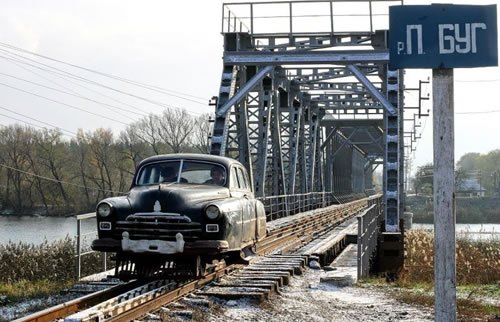Taxes Subsidize 6.9m Mass Transit Riders; Most Poor People Drive to Work
Despite the billions in federal and state taxpayer dollars poured into mass transit programs, only 6,908,323 working Americans take advantage of the subsidized service, according to US Census Bureau data released yesterday. The agency’s American Community Survey, a questionnaire mailed to three million households, found that 121,248,284 workers over the age of 16 regularly commuted to work by personal automobile or carpool last year. Despite the comparatively small number served by buses, subways and rail, the Obama Administration has made expanding mass transit a top priority. “President Obama’s vision of robust, high-speed rail service offers Americans the kind of travel options that throughout our history have contributed to economic growth and enhanced quality of life,” Transportation Secretary Ray LaHood said in April. “We simply can’t build the economy of the future on the transportation networks of the past.”
The stimulus bill poured $8 billion into the president’s proposed expansion of rail. Another $8.4 billion in taxpayer funds have been directed to “stimulate” mass transit on top of the existing federal money set aside for such programs. The president’s 2010 budget sought $42 billion for highway spending compared to $10.3 billion for mass transit programs that serve just five percent of the working public. The president strongly defended his priorities.
“Investing in mass transit and high-speed rail, for example, doesn’t just make our downtowns more livable; it helps our regional economies grow,” Obama explained in a July speech at an urban policy roundtable. “So you take an example like… Kansas City. One idea there focuses on transforming a low-income community into a national model of sustainability by weatherizing homes and building a green local transit system.”
The combined federal spending on transit this year represents a $2300 subsidy for each passenger, not including local and state funds devoted to such programs. Taxes on motorists, including a direct 2.9 cent per gallon federal levy on gasoline, are the primary source of funds for subway, bus and rail systems.
The census survey also showed that greater numbers of the working poor used cars and carpools to get to work than transit. A total of 17 percent of transit users reported incomes over $75,000 per year in income while only 10.6 percent fell below the poverty line.
A copy of the census results can be found in a 1.5mb PDF file at the source link below.
Means of Transportation to Work by Selected Characteristics (US Census Bureau, 10/27/2009)
[courtesy of thenewspaper.com]
More by The Newspaper
Latest Car Reviews
Read moreLatest Product Reviews
Read moreRecent Comments
- Danddd Or just get a CX5 or 50 instead.
- Groza George My next car will be a PHEV truck if I can find one I like. I travel a lot for work and the only way I would get a full EV is if hotels and corporate housing all have charging stations.I would really like a Toyota Tacoma or Nissan Frontier PHEV
- Slavuta Motor Trend"Although the interior appears more upscale, sit in it a while and you notice the grainy plastics and conventional design. The doors sound tinny, the small strip of buttons in the center stack flexes, and the rear seats are on the firm side (but we dig the ability to recline). Most frustrating were the repeated Apple CarPlay glitches that seemed to slow down the apps running through it."
- Brandon I would vote for my 23 Escape ST-Line with the 2.0L turbo and a normal 8 speed transmission instead of CVT. 250 HP, I average 28 MPG and get much higher on trips and get a nice 13" sync4 touchscreen. It leaves these 2 in my dust literally
- JLGOLDEN When this and Hornet were revealed, I expected BOTH to quickly become best-sellers for their brands. They look great, and seem like interesting and fun alternatives in a crowded market. Alas, ambitious pricing is a bridge too far...


































Comments
Join the conversation
geeber: When heading into Philly, I take the train, which takes slightly longer and is surely more expensive (for me) just to avoid the Sure-Kill. It's typically worse than L.A. traffic. Going to D.C. can be silly. The beltway routes are more jammed shut than downtown, and using the Interstates that take you within blocks of the White House is faster than fighting the daily suburban transhumance. I'm happy to pay for mass transit systems. It frees up the roads and gives me some options (some times). If we're worried about highway maintenance we need to have a different conversation, one about heavy multi-axle trucks, since they are responsible for nearly all surface wear.
@FreedMike, My only beef with your otherwise dead-on post is your city size estimates. Seattle isn't "twice the size" of Denver. ;) Good post. And for the guy who says Fed money isn't used for highways outside of the stimulus, you'd be wrong.